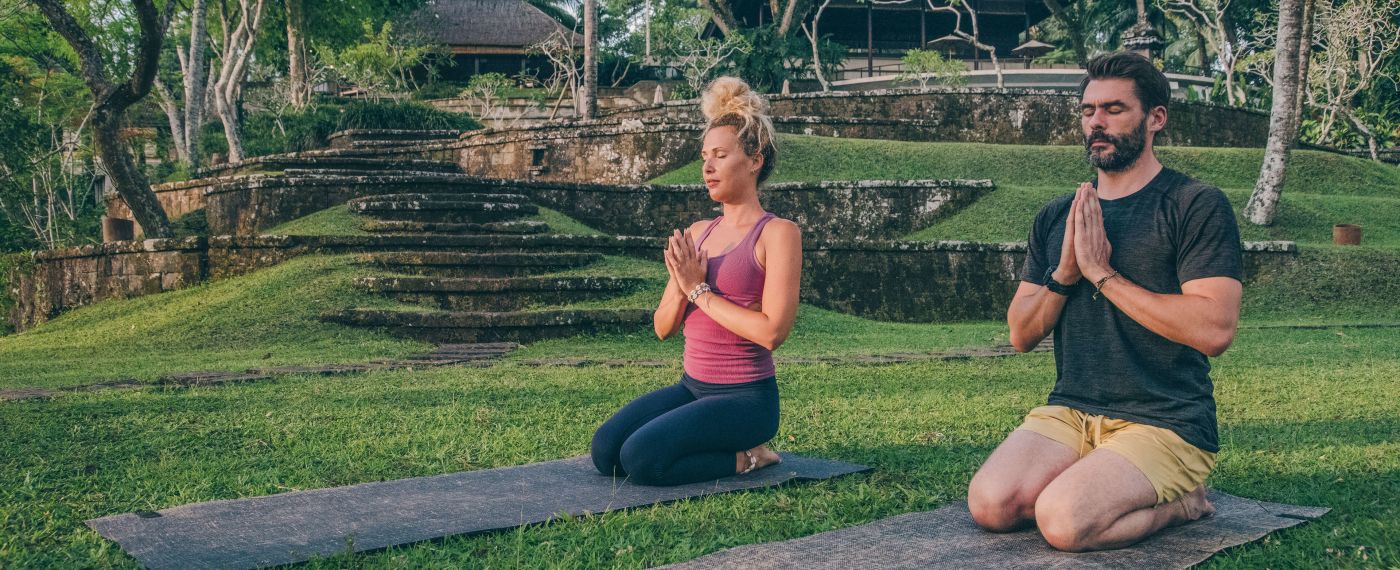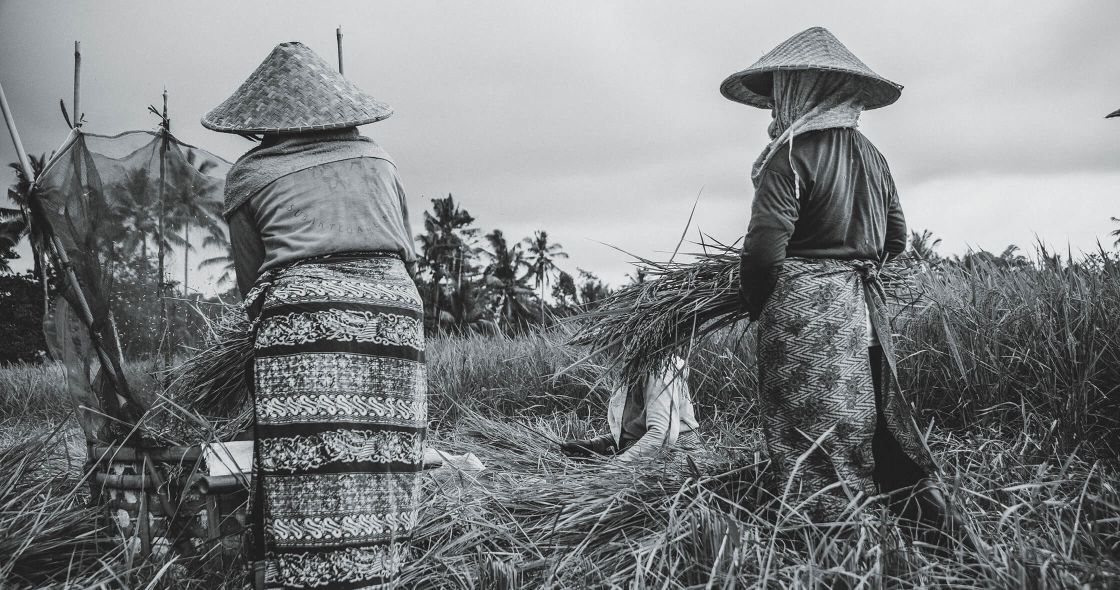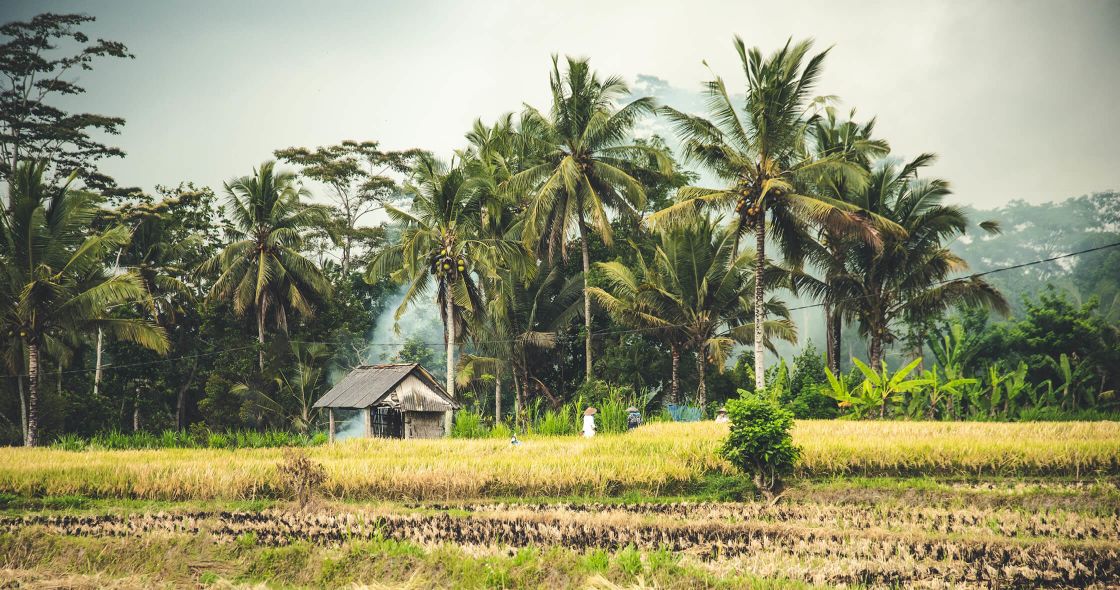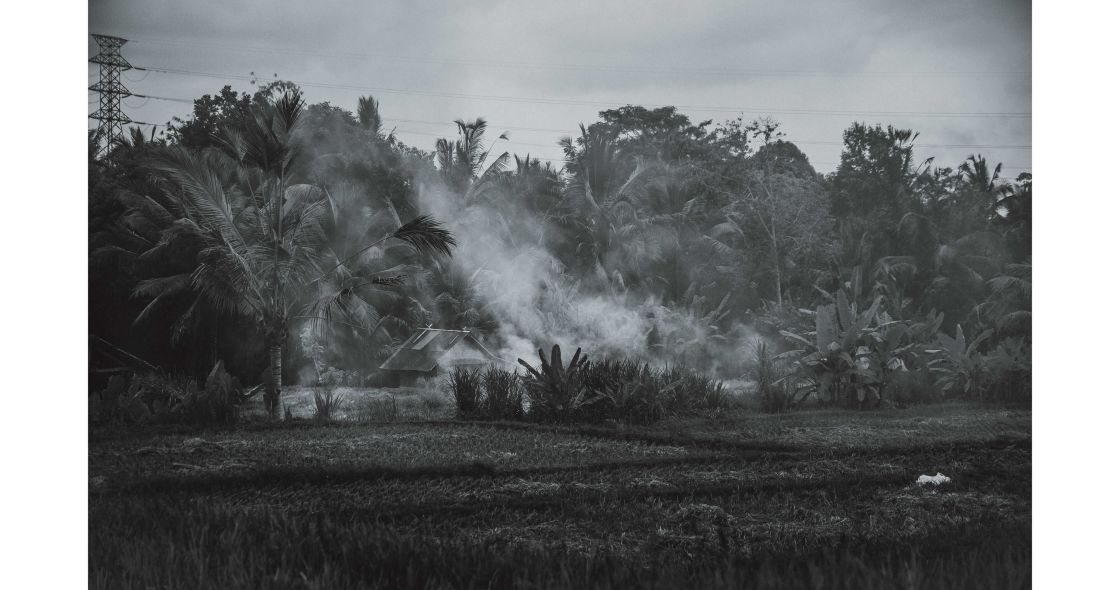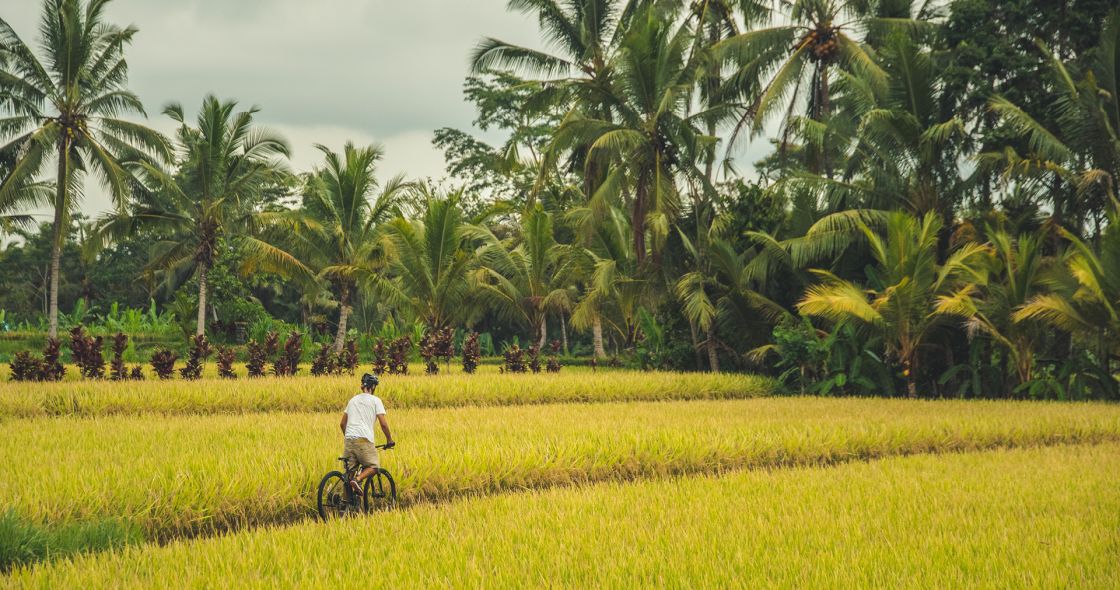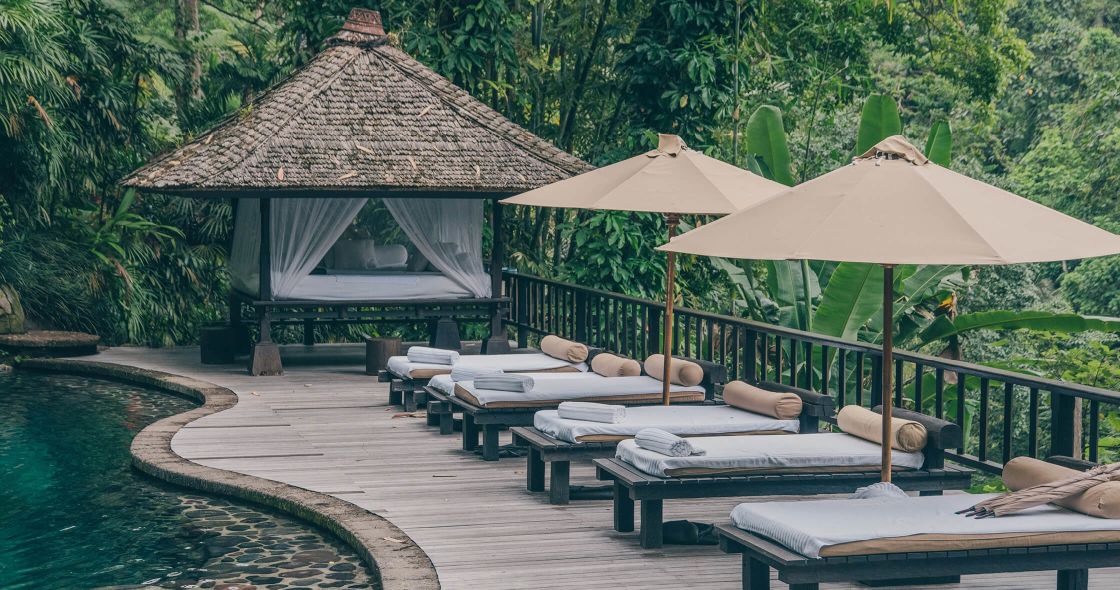
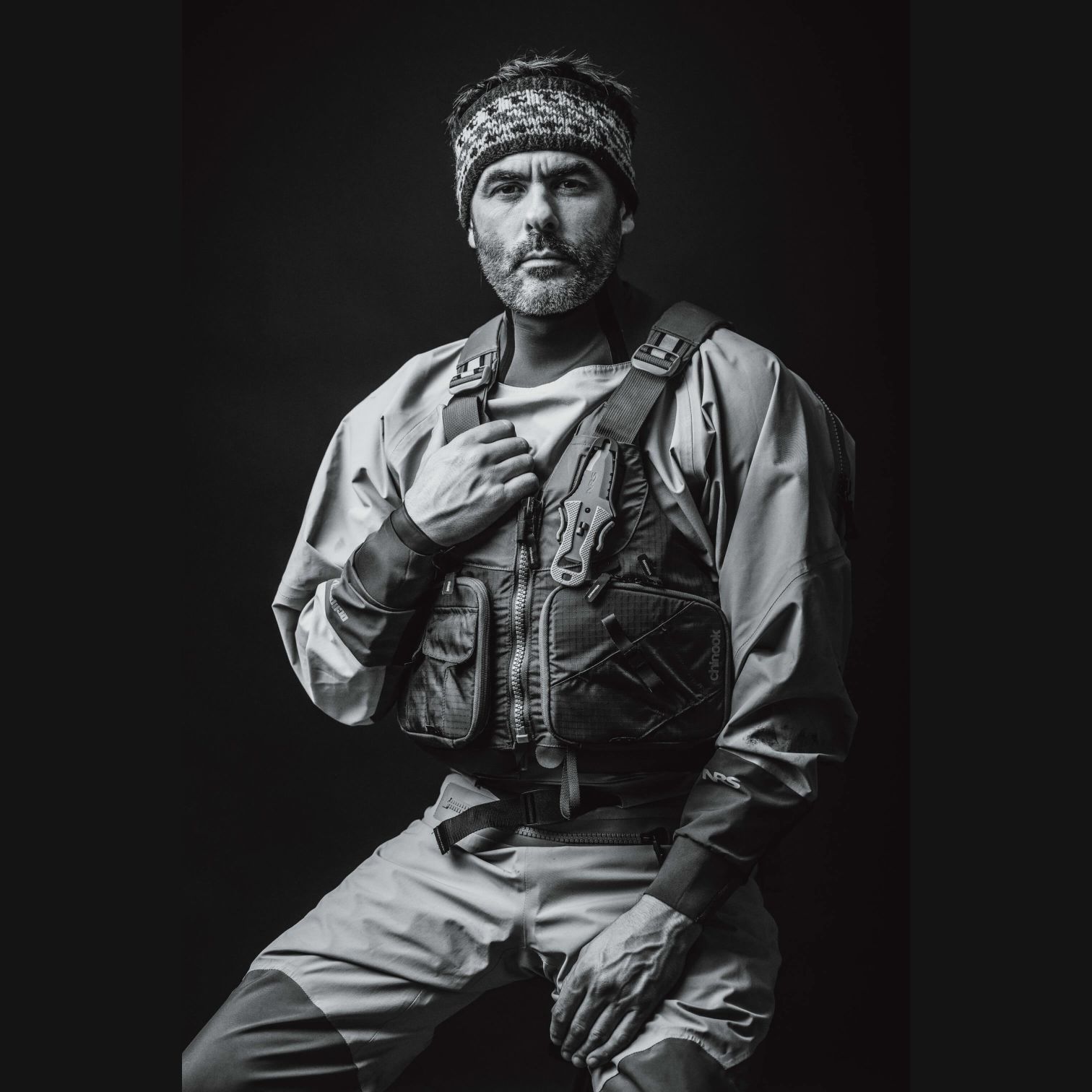
Ian Finch
Ian Finch is a British photographer, former Royal Marine Commando and outdoor guide.
His journeys aim to capture authentic bookmarks in time from expeditions, landscapes and people.
For more information see www.ianefinch.com or on Instagram at @ianefinch.
All image credits: Ian Finch
Exploration and adventure is as necessary to me as breathing. From the wild tundra of Alaska to the Badlands of the Mongolian steppe, I travel to satisfy a craving — for new landscapes, culture and the story of how the two inevitably entwine. But long periods away on expeditions take their toll. Every now and then, I know I have to put down my rucksack and cameras. But it’s easier said than done: for a mind that constantly seeks new frontiers, both creatively and geographically, stopping is a hard thing to do.

I came to COMO Shambhala Estate to try and find that pause. The secluded location, settled in the dense green jungle of central Bali, lends itself to a holistic healing ethos. Its boundaries are flanked by natural wonders: local culture, mountain-fed rivers, rich green rice fields and deep gorges carpeted in vibrant red flora, palms and Kamboja trees. For me, the colour green symbolises nature. It also represents harmony, peace and abundance. I’ve come to engage and unwind, without stopping altogether — to learn to move mind and body in a more holistic and balanced way.


I’m shown to my villa on the eastern side of the estate. It’s called ‘Bayugita’ or ‘Wind Song’, and is named for the easterly breeze that whispers across the property during sunrise. Scattered on the hillsides around me, another four properties honour the other elemental forces: ‘Tirta Ening’ translating as ‘Clean Water’; ‘Wana Kasa’, or ‘Forest of the Mist’; ‘Uma Bona’ meaning ‘Earth Son’; and Tejasuara which is ‘Sound of Fire’. The buildings are perched on long stilts, and intricately carved from burgundy teak wood, bound with local bamboo and natural twine.


The next day, I settle in. I walk the entire estate, along winding paths, and make my way down to the sweeping rush of the Ayung River in the valley’s base. I discover Kedara, a collection of thatched relaxation huts and decked platforms sheltered by the protective canopy of the rainforest and overlooking the serene pools and rocky coves of the river.

The walk alone, accompanied by the sound of birds, is a meditative process — a chance to connect and disconnect, to be immersed and surrounded by water and wildlife. Walking back up to the main resort, I pass double-tiered open yoga studios and staggered pools, all far enough apart to offer seclusion and quiet isolation.


The total quiet is in contrast to the vibrant atmosphere of the main GLOW restaurant, where the open kitchen is bustling and alive. The chefs plate one dish after another — a colourful roast pumpkin salad with chickpea, goats’ cheese and pickled pumpkin, an earthy and vibrant lentil and beetroot dish, with cauliflower, green bean, edible flowers and a delicate herb vinaigrette. I enjoy a beautifully seared fillet of Mahi-Mahi, carrot and ginger puree with an intricate chickpea, olive and orange dressing.


I have a simple urge to use my body, to seek local culture and to feel a different soil beneath my feet.


For me, adventure is meditation, in all its forms. For the next two days I have a simple urge to use my body, to seek local culture and to feel a different soil beneath my feet. The estate is cradled by living and working communities growing rice and living within the seasonal cycle of crop and harvest. I cycle for hours along narrow trails, past smoking fields of palm trees, and groups of laughing women harvesting rice into shakers, ready for husks to be removed and rice to be dried and consumed.

On the Kintamani Freewheel route, I navigate back-country roads past local temples, and markets overflowing with vibrant fruit and vegetables. I encounter a tiny community preparing for a traditional wedding. The local culture, I realise, is the thread that binds together the natural landscape and the people that work at COMO Shambhala Estate.
The following morning, I climb the majestic Mount Batur in the pre-dawn hours, lights and head torches flickering. As pitch black skies lighten to grey, street lights in the valley below turn off. Cotton wool clouds form then disperse. I peer into the smouldering crater. On its edgelands are living, breathing villages, and fertile fishing lakes.
Another day, and the new morning sun pulls me outside and onto my cobbled stone balcony. Shards of golden sunlight splinter through the palm trees that line the rice fields opposite. I quietly make my way to Ojas, a serene area in the heart of the COMO Shambhala Estate. Above me, an open-air yoga studio has sweeping views over the dense jungle, while below, massage rooms sit alongside stone pools and the coming and going of local wildlife. Today is the day for restoration, repair and rejuvenation, for sluicing off months of arduous adventure and expeditions. As I lie under the hands of a talented masseuse, my thoughts blur — the residue of an overly creative mind. I’m encouraged to let each thought come and go, to arrive and leave without taking hold. My body begins to sink. I settle into a peaceful state seldom reached in the rhythm and rush of my city life and work commitments. Back home my senses are constantly pulled outwards.
Here, I have the space to let my thoughts drift inwards, away from the spiderweb of photography projects, deadlines, expeditions and logistics. As the massage ends, my thoughts return to the present, to a place that reminds me that self-care is not only a mental process in my world of physicality and adventure; it is a visceral and tangible act of nurture too. I spend the afternoon finding shaded pockets of green. As the sun finds its place below the horizon, I finish my meditation and begin a yoga session. My instructor’s knowledge of the form helps me better understand better the possibilities and depth of yoga, and how simple daily movements can help control the flow of energy for a brutally active lifestyle like my own.
As the clips to my pack snap into place at sunrise on my final morning, I choose to walk the estate trail once more, to connect and disconnect, to focus inwards instead of outwards. I use the last moments of every journey I take to reflect and remember. I’m usually also pondering deadlines or training schedules for an upcoming expedition. Today, I let those thoughts flow downriver like the waters of the Ayung. Instead, I think about self-nurture, about creating space back home for mental and physical recovery. I may find it hard to stop, but now I understand why stopping is something we all must do — to find the time to pause and heal.


Make the time at COMO Shambhala Estate yours.
